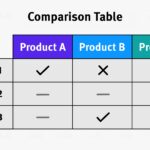Understanding comparative advantage is crucial for grasping international trade dynamics. This article provides a step-by-step guide on How To Solve Comparative Advantage Problems, using clear examples and practical techniques. You’ll learn how to calculate opportunity costs and determine which country has a comparative advantage in producing specific goods.
Calculating Opportunity Cost: The Foundation of Comparative Advantage
The first step in solving comparative advantage problems is understanding opportunity cost. Opportunity cost represents the potential benefits an individual, investor, or business misses out on when choosing one alternative over another. In the context of comparative advantage, it’s the cost of producing one good in terms of the other good forgone.
Let’s use a hypothetical example of iron ore and car production in Australia and China. Assume China can produce a maximum of 80 units of iron ore or 100 cars, while Australia can produce 70 units of iron ore or 50 cars.
Calculating Opportunity Cost for Each Country
To calculate the opportunity cost, divide the maximum production of one good by the maximum production of the other good.
China:
- Opportunity Cost of 1 Iron Ore: 100 cars / 80 iron ore = 1.25 cars
- Opportunity Cost of 1 Car: 80 iron ore / 100 cars = 0.8 iron ore
Australia:
- Opportunity Cost of 1 Iron Ore: 50 cars / 70 iron ore = 0.71 cars
- Opportunity Cost of 1 Car: 70 iron ore / 50 cars = 1.4 iron ore
Determining Comparative Advantage
Comparative advantage lies with the country that can produce a good at the lowest opportunity cost. In our example:
-
Iron Ore: Australia has a comparative advantage because its opportunity cost (0.71 cars) is lower than China’s (1.25 cars).
-
Cars: China has a comparative advantage since its opportunity cost (0.8 iron ore) is lower than Australia’s (1.4 iron ore).
Applying the Concept: Practice Example
Now, let’s apply these steps to another scenario. Consider the production possibilities of wheat and rice in Mexico and Vietnam.
Using the data provided in the graph, calculate the opportunity costs for each country and determine which country has the comparative advantage in rice production. This exercise will solidify your understanding of how to solve comparative advantage problems.
Conclusion
By understanding opportunity cost and applying the simple calculation methods outlined above, you can effectively solve comparative advantage problems. This knowledge allows you to analyze trade patterns and understand why countries specialize in producing certain goods. Recognizing comparative advantage is fundamental to understanding the benefits of international trade and global economic interconnectedness.
